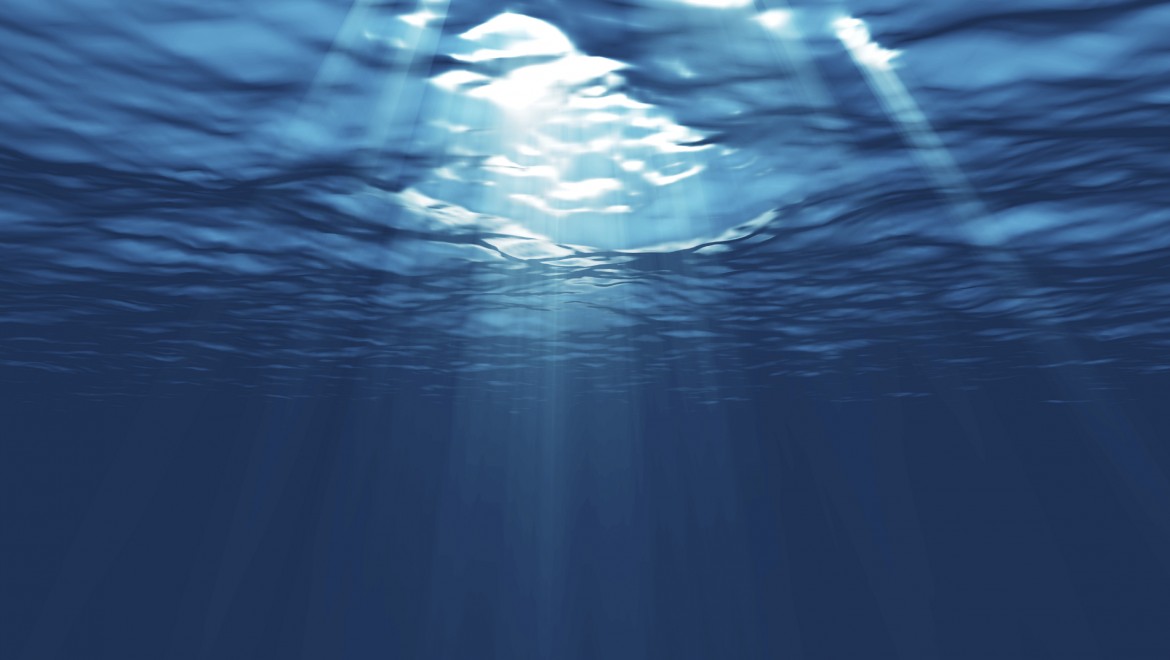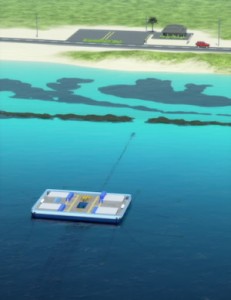Plans for a floating power plant that will harness solar energy stored in Cayman’s coastal waters are moving forward following the completion of an environmental impact study.
The owners of OTEC Cayman Ltd., in Grand Cayman this week for a renewable energy conference, told the Cayman Compass their consultants have completed the required environmental studies, which will be submitted to the Environmental Assessment Board in the coming weeks.
A series of public meetings are expected in the summer as the company seeks approval for the pioneering project ahead of a 36-month construction process.
Derek Dyson, secretary for OTEC Cayman, said, “We are confident we have done everything that has been asked of us from a regulatory perspective. Hopefully, they will see it the same way and give us the green light.”
The company signed a power purchase agreement with the Caribbean Utilities Company last year for 6.25 megawatts of energy.
In the long term, they believe the floating power plant, connected to a shoreside facility by underwater cables, could be scaled up to provide up to 25 megawatts – around a quarter of Cayman’s peak power requirements.
Ocean thermal energy conversion works by exploiting the temperature difference between the warm surface water and cold water piped from 4,000 feet below the surface, to power ammonia-driven steam turbines to create electricity.
The company plans to station a power platform off North Side, linked to a shoreside substation that connects to the national grid.
OTEC believes the Cayman Islands is an “optimal location” because of the steep drop-off in depth that allows access to both warm surface waters and the cooler water found at depth close to shore.
The technology has been around for some time and has undergone successful trials in China and Hawaii, but the Cayman project would be the first utility-scale commercial application of the technology.
Eileen O’Rourke, president of Baltimore-based OTEC International LLC, said, “There is nothing magical about the process, but there are significant challenges, which are really about good design engineering and innovation to optimize the performance of the plant. We have a large portfolio of patents which are essentially about getting the best performance from this established system in the unique conditions that OTEC requires.”
According to OTEC’s principles, its consultants, Hawaii-based North Shore Consultants LLC and U.S.-based Cardno ENTRIX, have sought to address public concerns, highlighted in the scoping process of the environmental impact assessment, including the visual impact of the power plant, the environmental threats posed by ammonia and the ability to withstand hurricanes.
Barry Cole, director of technology and development for the firm, said the visual impact would be equivalent to a medium-sized fishing boat.
He said the power platform was designed to withstand the most severe hurricanes that had impacted the Cayman Islands and could be shut down in advance of a storm, if necessary. He said the procedures for handling ammonia meet international safety standards and contain contingency plans to prevent or mitigate the impact of potential leaks.
Ultimately, the plant would seek to employ 12 people, working in shifts, as well as some shoreside support staff.
Mr. Dyson said the Kilowatt hour price to CUC would be comparable to diesel and solar. OTEC says the facility will be able to supply power 24 hours a day, 365 days a year, potentially making it more reliable than more traditional renewable energy sources such as wind and solar.
The platform and pipes will be constructed in the U.S. and shipped to Cayman.
Amid uncertainty about the length of the regulatory and approvals processes, the company is cautious about making predictions, though they believe the first OTEC-powered light switch could be turned on within five years.
Mr. Dyson said, “We need about 36 months after the approvals are received, the process approved and financial closing to build the plant, bring it here and do performance testing, and start the commercial operation and connect it into the grid.”
You can read the original article from the Cayman Compass here.


